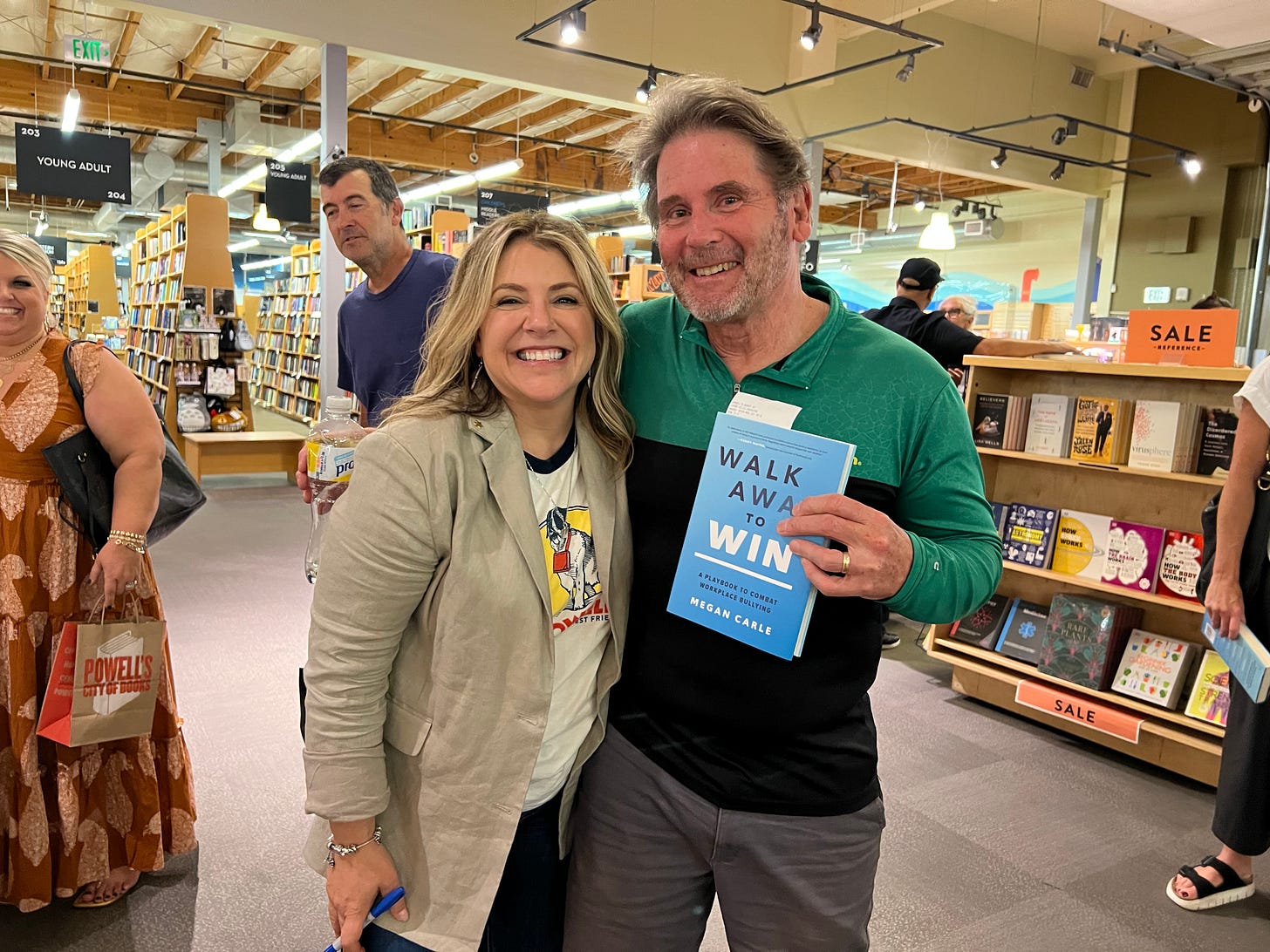Bullying in the workplace
A former Nike exec—and client of mine—breaks ground with her book on it
Megan and me at her launch party, May 2023, at Powell’s Bookstore in Beaverton.
Editor’s note: October is National Bullying Prevention Month. And so it seemed appropriate to interview Portland author Megan Carle, who literally wrote the book on the subject, Walk Away to Win: A Playbook to Combat Workplace Bullying (McGraw Hill, 2023). As an editor, I had the privilege of working with Megan on the book. She began as a customer service representative at Nike in 1988 and, over the next 30 years, rose through the ranks to lead international teams in London and Amsterdam, ultimately becoming Vice President/General Manager of North America Basketball. However, she quit Nike in 2016 after growing weary of what she saw as an unrecognizable bully culture. The founder of Carle Consulting LLC, she speaks and gives workshops on corporate culture, leadership and, of course, workplace bullying.
BOB: FOR FOLKS NEW to this subject, can you define workplace bullying for us?
Megan: I use the definition used by the Workplace Bullying Institute: It is a repeated pattern of health-harming mistreatment, anything from how people speak to you, sabotaging you, to excluding you to abusive conduct that takes the form of verbal abuse. It’s behavior that’s seen as threatening, intimidating and/or humiliating.
Bob: You’re brought before a jury of doubters who think this bully subject is “much ado about nothing.” Convince us the problem is real.
Megan: The statistics are staggering: 80 million workers say they’ve been affected by workplace bullying. That’s one in two employees who were either targeted or witnessed some form of mistreatment along these lines. But it’s known as “the undiscussable.” Nobody wants to talk about it—and that’s exactly why we should be talking about it. You don’t expect this thing we relate to mean kids on playgrounds to be part of the professional workplace, but it is.
Bob: That’s exactly what [former University of Oregon associate athletic director) Jimmy Bartko told me about his being abused by a priest when he was a little boy (Boy in the Mirror.) He had no words to define it.
Megan: Exactly. And even though he was a little boy, and we are adults, we’re just now starting to identify language to understand this problem. People who are targeted think it’s their fault and spend so much time trying to figure out what they can do make the bully different or figure out “What have I done to bring this on me?” There’s lots of shame involved when, really, you didn’t do anything to bring this on you. It came at you. Many people are victimized twice: first, when they get bullied and, second, when they speak up and are gaslighted.
Bob: We’ll go deeper on that later. For now, what are some of the key factors that allow workplace bullying to exist in the first place?
Megan: As I said, first, the employee simply not being aware of what’s going on nor having the tools or language to understand it, much less to try and deal with it. And second, a workplace culture that allows such behavior to happen in the first place.
Bob: You worked at a company, Nike, that you go out of your way to tell readers you loved and respected. How could things have gone so sour for you?
Megan: Yes. The culture of any workplace is shaped by the worst behavior leaders will tolerate. In my situation—and this happens at lots of places—there were people at the highest level who tolerated—and in some cases encouraged—terrible behavior. Bullying behavior.
Bob: OK, so what does this “bullying behavior” look like?
Keep reading with a 7-day free trial
Subscribe to Bob Welch: Heart, Humor & Hope to keep reading this post and get 7 days of free access to the full post archives.





